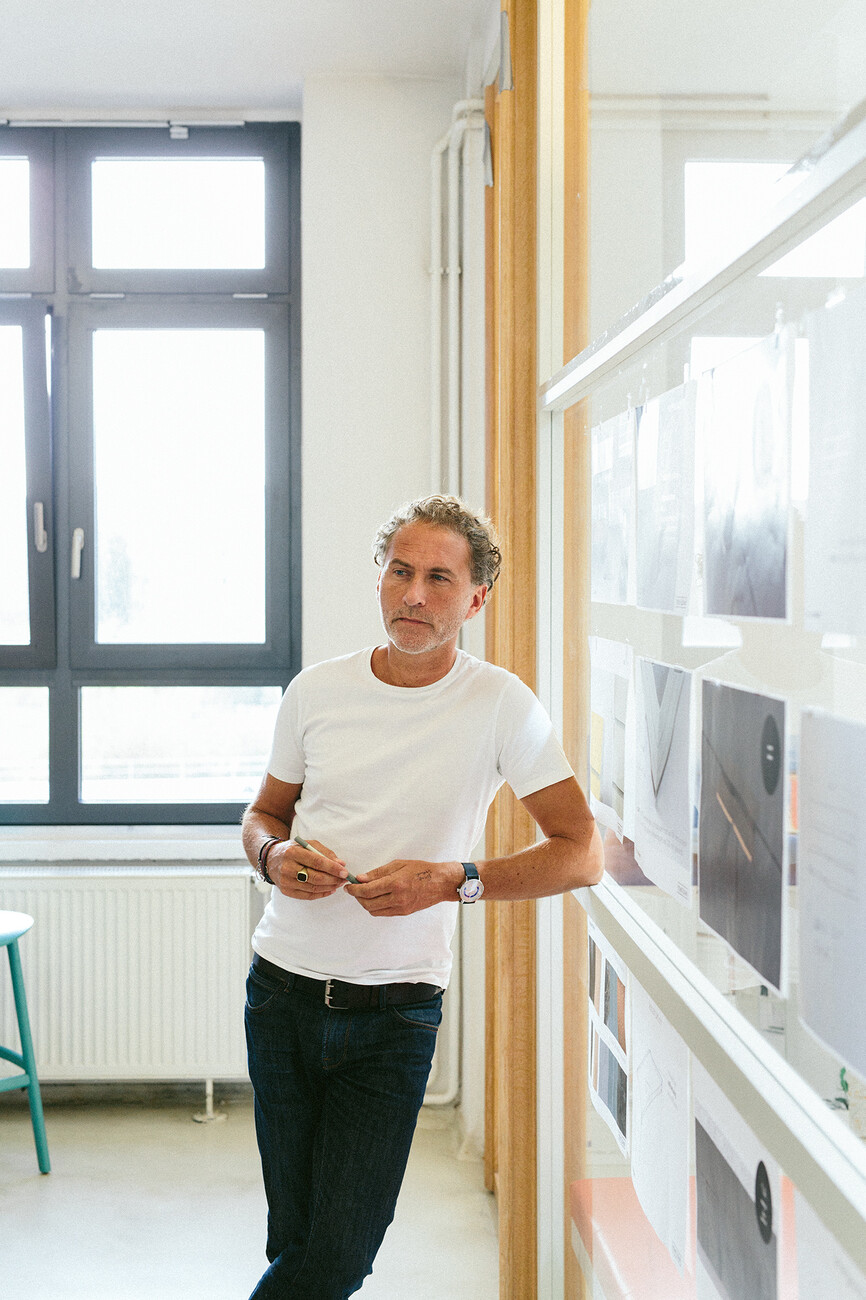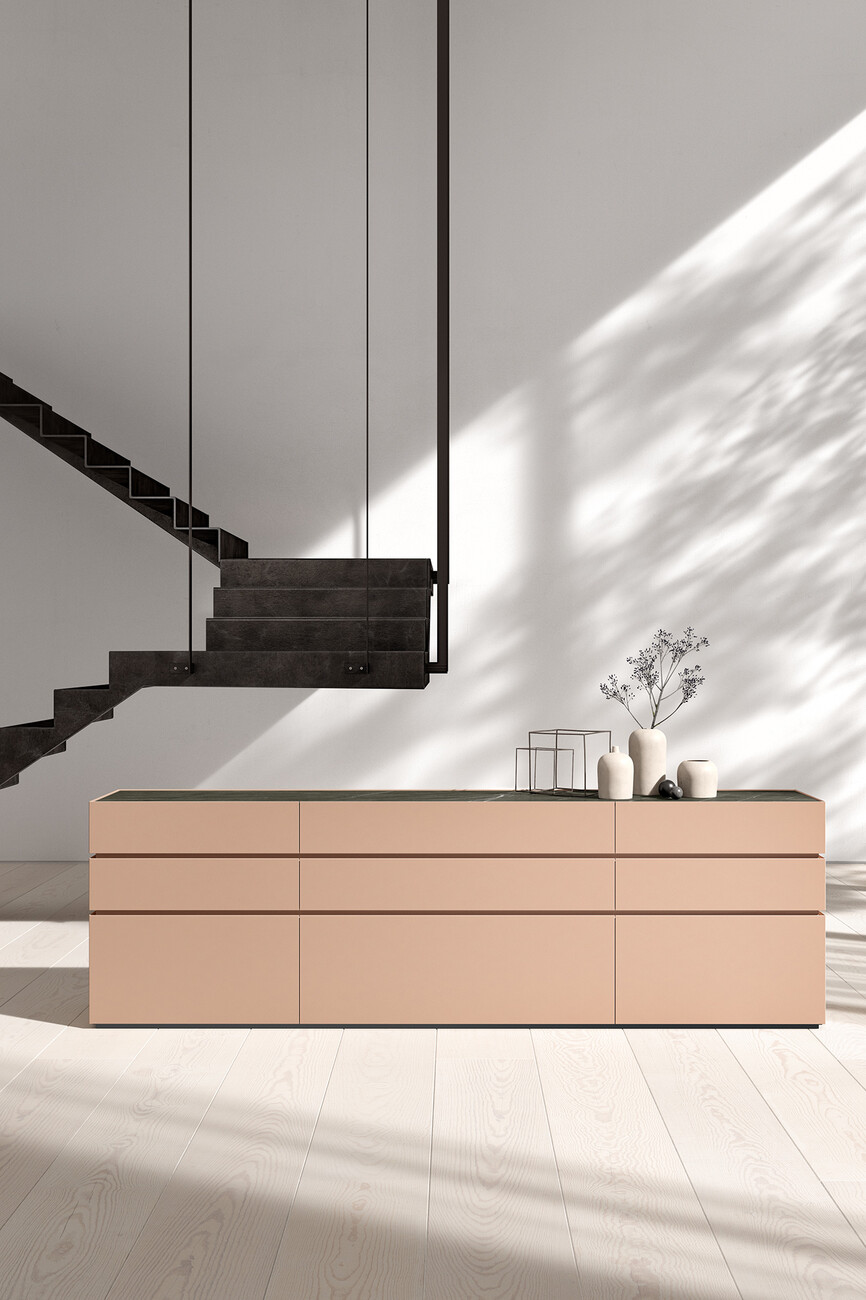Conservatory design
Fabian Peters: What was your guiding principle when you were developing “cube” into “just cube”?
Werner Aisslinger: Moving the program forward was quite a challenge. After all, “cube” has been one of the most important model series at Interlübke for 18 years – “cube” has almost turned into a sub-label of sorts for Interlübke. That’s why we had to look at the question of how to update such a system very closely and responsibly.
How do you solve a complex task like that?
Werner Aisslinger: By adjusting a product carefully, but not too much – a re-design, as it were, that doesn’t go over the top so as not to lose the essence. You have to take the product’s history into account while still redefining it for the future.
What did you absolutely want to preserve?
Werner Aisslinger: “cube” has its very own formal language, in which the joint accentuates the item of furniture without robbing it of its slimmed-down elegance. I wanted to retain this basic concept at all costs and carefully develop it further. However, it was very important to me not to turn this design classic into a pure styling product by doing “too much”.
Why change anything at all in the classic design?
Werner Aisslinger: On the one hand I found that the covering sheet had gotten a bit long in the tooth, which made the appearance still classic, but as a whole look somewhat dated. Secondly we decided to expand “cube” by a complete vitrine system. Pure storage space is generally loosing importance, after all. People no longer get a big set of plates for their wedding like they used to, so they no longer need to find space for that kind of thing. Conversely, people travel more and like to bring objects home with them. Or they collect and would like to present their identity through their “personal wunderkammer” – for their guests to look at but also to look at themselves. That’s why a vitrine is an important building block in a storage system nowadays.
“Capacity for collaging” is a central notion in your approach to furniture design. You want your designs to dovetail with diverse environments. How were you able to implement this idea for “just cube”?
Werner Aisslinger: Well, “cube” is a sideboard or dresser program first and foremost. These furniture items tend to be solitaires, regardless of whether they are three, four or just one meter long. Our idea lay in expanding the material palette for “just cube” by working with different wood veneers and stone slabs. This has greatly expanded the playing field and gives each customer more possibilities for integrating the furniture item into their own, individual home-collage.
Interlübke furniture is nothing you buy for ten years. Does the notion of longevity play a role for you when you’re designing such a product?
Werner Aisslinger: Definitely. That’s why it’s so important to me in my designs for Interlübke in particular to tease out the archetypal aspect of an item of furniture. After all, people often invest in these objects in order to keep them for life. “just cube” should appear as timeless as possible to the observer. Things that may change over time – how a door is hinged, which hinges are used, how something is joined – these things should be as invisible as possible. It is always a balancing act between leaving the character of the furniture item intact, and retaining its essence, while at the same time paring down the design enough for it to gain a sense of purity and definitiveness. And finally you can’t make it boring, either.
Last question: Does storing and preserving things play a large role for you personally?
Werner Aisslinger: I am a keen collector. I actually never like throwing anything away, but prefer to keep everything. That’s why I need a great deal of storage space – despite not keeping my “treasures” as neatly arranged as I feel I should.







